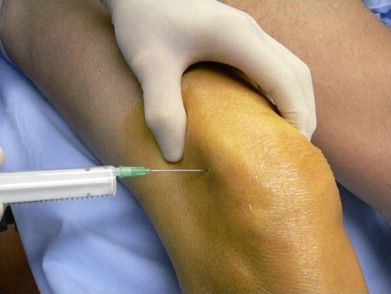Mastering knee puncture and infiltration:
Our guide to success
2. Understand the indications and contraindications
Before performing any medical gesture, it is important to know the appropriate indications. Knee puncture and infiltration are generally recommended for relieving pain related to arthritis, osteoarthritis, bursitis or other joint problems. However, certain contraindications may apply, such as a local infection, hemophilia or an allergy to the drugs used during the infiltration.
With Sim&Care
Take charge of 7 different patient cases, presenting various pathologies (simple synovial effusion, bursitis, popliteal cyst, gonarthritis) and familiarize yourself with different indications for knee puncture and/or infiltration.
3. Benefit from the experience of experts
Attending practical demonstrations of knee puncture and infiltration by experienced professionals is very instructive. Observe the technical gestures, the location of the entry points and the precise movements. Do not hesitate to debrief with your colleagues after the procedure. This will help you identify the key steps of the gesture and progress in your learning.
With Sim&Care
Watch a demonstration by your trainer, take the time to debrief all aspects of the procedure with him, and understand in detail the factors of success or failure of the procedure.
4. Practice as much as possible
As with any medical skill, regular practice is the key to mastering knee puncture and infiltration. Take every opportunity to practice on simulators, or, once you are confident enough, on real patients under the supervision of an experienced professional. Repetition will allow you to gain in ease and efficiency.
With Sim&Care
Benefit from a simulator allowing unlimited training, without risk for the patient, or consumables to be replaced. Practice the gesture as many times as necessary to feel comfortable enough to take care of your first patient.
Learning how to puncture and infiltrate the knee is a valuable skill for any medical professional. By understanding the anatomy of the knee, knowing the indications and contraindications, using medical simulation, and practicing regularly, you will develop the necessary skills to perform these procedures successfully and safely
Sim&Care supports you in your learning and provides you with the keys to progress in a safe environment until your first real puncture or infiltration.
Discover the contribution of simulation in knee puncture and infiltration training:
Improving medical competence: Learning knee puncture and infiltration through simulation

